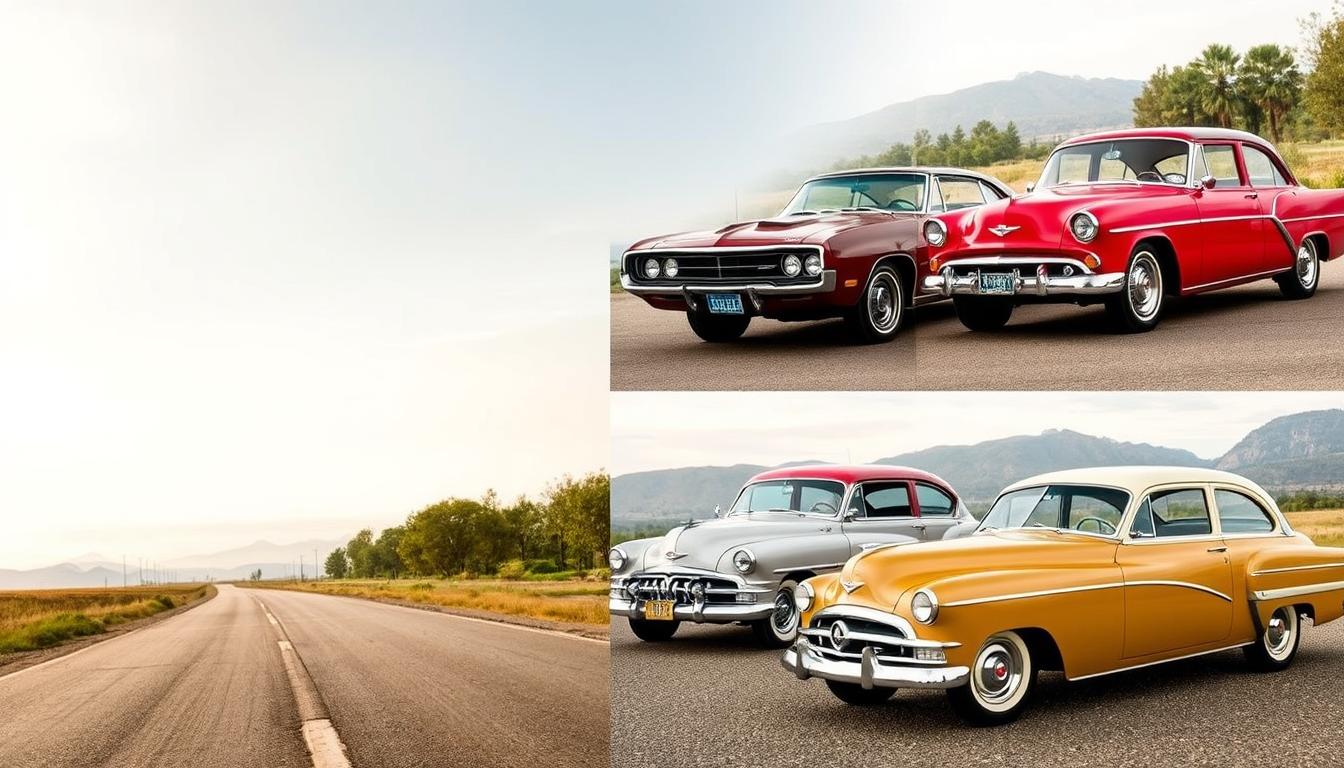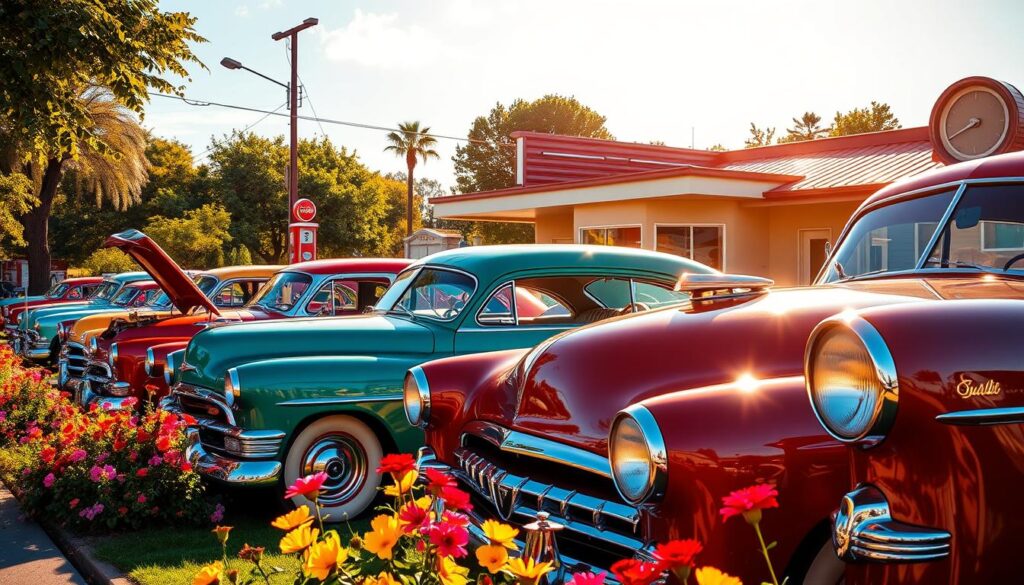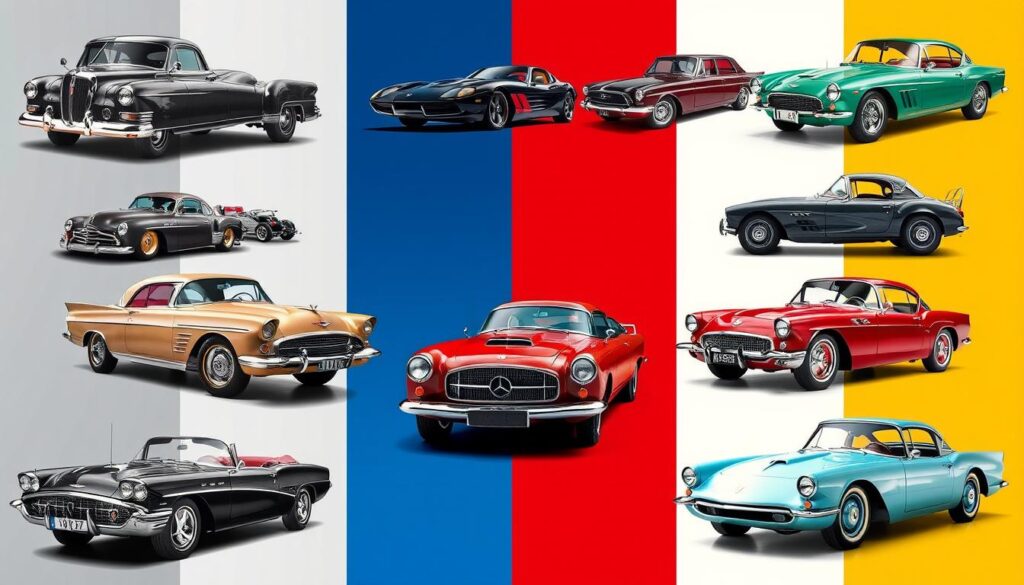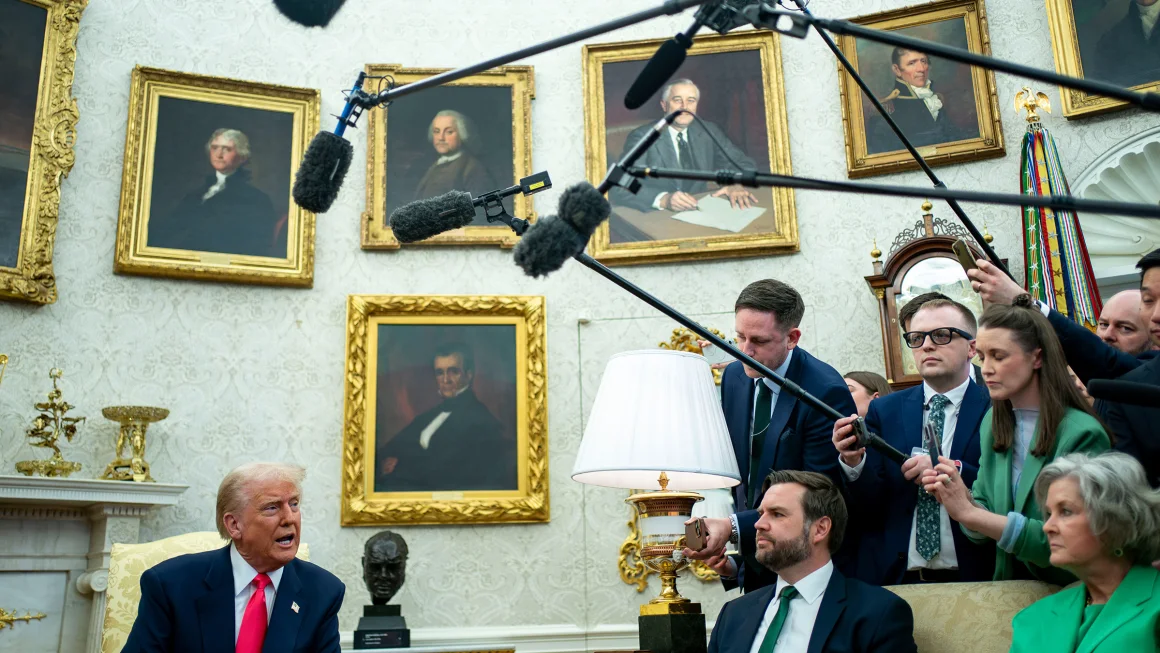
Ever wondered what makes a vintage car different from an antique? Exploring classic car categories reveals the unique qualities of these vehicles. They are more than just cars; they showcase craftsmanship, innovation, and nostalgia from the past. This guide will take you through the rich histories and characteristics of classic cars, including antique and vintage models, to enhance your appreciation and understanding.
Key Takeaways
- Classic car categories help enthusiasts understand different types of vintage automobiles.
- Antique cars are typically defined as those manufactured before 1919.
- Vintage cars generally fall within the years 1919 to the 1930s.
- Classic cars encompass vehicles manufactured from the 1920s to the 1980s.
- Each category features unique characteristics and appeal to various collectors.
- Knowing the categories can guide buying or restoration decisions.
Introduction to Classic Cars
Classic cars are a blend of history and culture. An introduction to classic cars shows their beauty and importance. They are cars from 20 to 30 years ago, loved for their nostalgia and charm.
These vehicles capture the hearts of many. They are seen as lasting pieces in the history of travel.
The vintage automobiles era was from the late 1910s to the early 1930s. Cars from this time were known for their elegance and detailed designs. Then, the post-war cars, made from the late 1940s to the early 1960s, brought sleek looks and new tech.
The 1960s and 1970s saw the rise of muscle cars. These cars were all about power and bold looks. They are loved for their speed and style, making them a favorite among collectors.
What Defines a Classic Car?
Understanding what makes a car classic involves looking at age and historical importance. Cars are usually called classic if they’re at least 10 years old. However, some people and insurance companies say they must be over 25 years old. The rules can change a lot depending on where you are, what insurance you have, and which car clubs you join.
Classic cars have special features that make them stand out. These might include unique designs, old technology, and a rich history. The Classic Car Club of America says cars made between 1915 and 1948 are “Full Classics.” Cars from the early days of cars, known as the Brass Era, are also considered antique.
It’s important to know the different types of classic cars. Vintage cars were made between 1919 and 1930, and antique cars go even further back. Hagerty insurance covers classic cars of any age, but there are rules about how you can use and store them. Knowing these categories can affect how much insurance costs and how valuable the car is to collectors.
Classic Car Categories
Classic cars fall into several categories, each with its own charm. Knowing these categories helps us appreciate these vehicles more. Here are the main types of classic cars:
Antique Cars
Antique cars are from before the 1920s. They are seen as precious pieces of car history. These cars are not for daily driving because of their age and old technology. For example, the 1903 Cadillac Model A is famous for its beauty and history.
Vintage Cars
Vintage cars were made between 1920 and 1930. They are rare and have a special charm. Models like the 1924 Aston Martin Grand Prix show off the style and innovation of their time.
Classic Cars
Classic cars are over 25 years old and still work today. They include favorites like the Volkswagen Beetle and Jaguar E-Type. These cars mix modern needs with a nostalgic feel.
Sports Cars
Sports cars started in the 1960s. They are small and built for speed and agility. The Chevrolet Corvette is a great example, loved for its power and design.
Muscle Cars
Muscle cars have big V8 engines and came out in the 1960s. They are fast, powerful, and stylish. The Ford Mustang is a classic example, loved for its American car culture.
Characteristics of Antique Cars
Antique cars are a key part of antique automobile history. They were built before 1920 and show amazing craftsmanship and engineering. These cars were seen as “horseless carriages” back then.
The characteristics of antique cars include their age and unique construction. They are often not as useful today because of their old design.
Some famous antique cars are the 1912 Ford Model T and the 1914 Mercer Raceabout. These cars were groundbreaking in their time. Today, they are often displayed or restored to show their beauty.
Keeping these cars in good shape is hard because of their age and rare parts. Experts are needed to take care of them.
Antique cars also have a deep historical value. They show the innovation that helped the car industry grow. At auctions, collectors pay a lot for these rare cars.
The 1924 Chrysler Model B-70, for example, sold for $27,000. This shows how valuable well-kept antique cars are.
Antique cars are more than just old cars. They remind us of the art and engineering of the past. Their history, craftsmanship, and the joy of collecting make them special to fans worldwide.
Understanding Vintage Cars
Vintage cars are a special part of car history, made between 1919 and 1930. This time saw big changes in cars. Today, people love vintage cars for their looks and history.
Models like the 1928 Duesenberg Model J and the 1925 Rolls Royce Phantom I show off the beauty and tech of that era.
Knowing the history of vintage cars is key. They tell us about the engineering and what people wanted back then. Collectors look for unique features like fancy bodywork and strong engines.
Fixing up vintage cars is a big job because they’re rare and need real parts. This work keeps their history alive and shows off the skill of making them. Owning a vintage car is like keeping a piece of history alive, filled with stories.
The Appeal of Classic Cars
Classic cars have a timeless charm that attracts many. They are cars from at least 20 years ago, keeping their original look and feel. This classic cars appeal is more than just looks; it’s a connection to the past.

For many, classic cars bring back fond memories. They also connect people to a community that loves history. These cars show elegance, style, and the power of their time.
- Classic cars hold their value better over time due to their historical significance and collector appeal.
- Vintage beauties often feature elaborate designs, evoking a sense of luxury and nostalgia.
- Enthusiasts are willing to invest significantly in well-maintained examples, reflecting the dual nature of these cars as both a hobby and an investment.
- Events and gatherings worldwide promote camaraderie among classic car enthusiasts, fostering a culture steeped in shared passion.
The classic cars appeal knows no borders, inspiring fans worldwide. The collector car market is full of different cars, from street rods to antique marvels. The Vault has sold over 1,000 cars since 2018, showing the demand for these iconic vehicles.
| Vehicle Type | Manufacturing Date | Notes |
|---|---|---|
| Antique Cars | 1975 or earlier | Manufactured over 45 years ago |
| Classic Cars | 2000 or earlier | Manufactured over 20 years ago |
| Vintage Cars | 1919 – 1930 | Evocative of bygone eras |
| Street Rods | Before 1949 | Modified for street use |
| Resto-Mods | Classic cars with modern features | Retain original appearance |
Popular Types of Classic Cars
Classic cars show a rich history of models that have shaped the automotive world. Each type has its own unique designs, technologies, and cultural importance. Let’s look at some famous antique models, vintage cars, and iconic vehicles that car lovers adore.
Notable Antique Models
Antique cars mark the beginning of car engineering. The Duesenberg Model J, from 1932, is known for luxury and power. It’s a symbol of innovation in its time. The Ford Model T, introduced in 1908, made cars affordable for the first time, changing how people moved around.
Famous Vintage Models
The Volkswagen Beetle is a highlight of vintage car history. It was made from 1938 to 2003, making it a legend in the car world. The Chevrolet Corvair, made from 1960 to 1969, is famous for its design and sold over 1.8 million units, showing its popularity.
Iconic Classic Vehicles
For many, iconic cars are the best of car design and engineering. The Mercedes-Benz 300SL Gullwing is loved for its unique style. It’s one of the most sought-after cars of its time.
The Porsche 911, launched in 1963, is still loved for its design and evolution. The Dodge Viper, starting in 1992, is known for its V10 engine and luxury sports car status.
| Model | Manufacture Years | Key Features |
|---|---|---|
| Duesenberg Model J | 1932 | Supercharged, luxury performance |
| Volkswagen Beetle | 1938-2003 | Longest production run |
| Porsche 911 | 1963-Present | Timeless design and continuous development |
| Dodge Viper | 1992-2017 | Iconic luxury sports car with V10 engine |
| Chevrolet Corvair | 1960-1969 | Unique designs with a significant production number |
Key Differences Between Classic Car Categories
Knowing the differences classic car categories is key for fans and collectors. Cars are split into antique, vintage, and classic based on age. The exact year can change how they’re seen.
| Category | Manufacturing Year | Typical Use | Value Examples |
|---|---|---|---|
| Antique Cars | 1975 or earlier (over 45 years old) | Car shows, restoration projects | 1924 Chrysler Model B-70: $27,000 |
| Vintage Cars | 1919 – 1930 (rarely found on roads) | Restoration projects, display vehicles | Expensive and hard to acquire |
| Classic Cars | 2000 or earlier (over 20 years old) | Pleasure drives, restoration projects, car shows | Mid-80s Honda CRX: $4,500 |
Prices for these cars vary a lot. Classic cars are easier to find and buy. Vintage cars are rare and often shown in car shows. Antique cars attract collectors who value their history and authenticity.
Insurance for these cars also changes based on their type. Getting a collector car insurance can save up to 40% on monthly costs. These policies are made for the unique needs of antique, vintage, and classic cars.

States have their own rules for these car categories. For example, a car might be historic in one state but ancient in another. Knowing these rules is important for registration and value.
Maintaining Your Classic Automobile
Keeping classic cars in top shape needs a lot of effort and regular care. Owners must commit to monthly upkeep to keep their cars looking great and valuable. This effort shows how much they love their vintage cars.
Regular cleaning is key. Vacuuming seats and cleaning stains with the right products is important. Also, learning to buff out small scratches yourself is a good skill. But, for bigger scratches, it’s best to get a pro.
Leather seats need special care. Regular conditioning keeps them soft and looking good. Always test the leather with water before cleaning to make sure you’re using the right product. After the pandemic, it’s also important to disinfect surfaces gently to avoid damage.
Classic cars run best on ethanol-free gas to avoid fuel pump problems. Use regular oil instead of synthetic, and change it at least once a year. Don’t forget to check the brakes regularly, too.
Checking fluids like oil, coolant, and windshield wiper fluid is crucial. Tires should be replaced every six to ten years, even if they look fine. Also, keep an eye on the battery to ensure it’s working well.
Washing your car by hand with microfiber cloths helps keep the finish in great shape. Make sure to prevent rust, especially in areas like the wheel arches and undercarriage. Driving your classic car regularly helps keep it in good working order.
For storing your car, a dry, climate-controlled garage with a concrete floor is ideal. This prevents moisture damage. Getting classic car insurance, like Hagerty’s, also helps protect your vehicle, covering its value and how you use it.
| Aspect of Maintenance | Recommended Action |
|---|---|
| Cleaning | Vacuum seats and clean stains with appropriate agents. |
| Scratches | Buff out light scratches DIY; consult professionals for deeper ones. |
| Leather Care | Condition seats periodically; disinfect with gentle soap and water. |
| Fuel Type | Use ethanol-free gasoline. |
| Oil Changes | Use conventional oil; change at least once a year. |
| Brakes | Inspect fluid levels and check for leaks. |
| Tire Replacement | Replace every 6-10 years regardless of condition. |
| Rust Prevention | Check and clean wheel arches and undercarriage regularly. |
| Storage Solutions | Store in dry, climate-controlled environments. |
Conclusion
As we wrap up our look at classic car categories, it’s important to think about the wide range of these amazing vehicles. The journey through classic cars shows us their historical value and lasting cultural impact. From the fancy cars made between 1925 and 1948 to the rare and beautifully crafted ones, each model has its own charm.
Classic cars continue to inspire fans and collectors, showing our love for car engineering and design. Whether you want to buy, restore, or just admire these cars, they connect us to the past. They are a key part of car culture.
Exploring classic cars is more than just admiring their looks. It’s diving into a world of human creativity and car history. By learning about these cars, fans can make better choices and enjoy the stories each car has to tell.
FAQ
What constitutes a classic car?
A classic car is usually over 25 years old. It can be an antique, vintage, or classic car. Each type has its own special features.
What are antique cars?
Antique cars are made before the 1920s. They are often collected for their historical value. But, they might not be good for everyday driving.
How do vintage cars differ from classic cars?
Vintage cars were made between 1920 and 1930. They have a unique charm and historical importance. Classic cars, on the other hand, are over 25 years old and still driveable.
What defines a muscle car?
Muscle cars have strong V8 engines. They were made from the 1960s on. These cars focus on speed and power.
Why is it important to understand classic car categories?
Knowing the categories of classic cars is key for collectors. It affects insurance, value, and appeal.
How can I maintain my classic car?
To keep your classic car in top shape, store it in a climate-controlled area. Follow a regular maintenance schedule. And, restore it carefully to ensure it lasts long and performs well.
What are some famous models of antique cars?
Some famous antique cars include the 1903 Cadillac Model A and the 1914 Mercer Raceabout. They are important for their role in car history.
What is the emotional appeal of owning a classic car?
Classic cars bring back memories and show off craftsmanship and innovation. They connect owners to history and bring joy. They also create a community among fans.
Can vintage cars be considered investment vehicles?
Yes, vintage cars can be a good investment. They are rare and well-made. Restoring them can increase their value.







No mention of the Kaiser Darrin. Short production run, sure, but it will always turn heads. Model T beautiful? Never, not even when it debuted. Carriages were still impressive.
Welcome Doug Kaiser
I agree with you